| 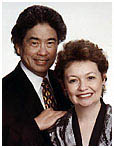 Effective
Teaching...
Effective
Teaching...
by Harry and Rosemary
Wong
August
2006
Effective Teachers
Are Proactive
Barbara De Santis
can get the attention of her students in less than five seconds.
And she can do this just by saying three words accompanied with
a smile—because she knows it works every time.
Currently teaching in the Sayreville Public Schools in New Jersey,
Ms. De Santis only has to say, “Give Me Five” and
the class quiets down immediately. This technique is explained
on page 184 of the book The First Days of School,
and in DVD 4 in the video series The Effective Teacher.
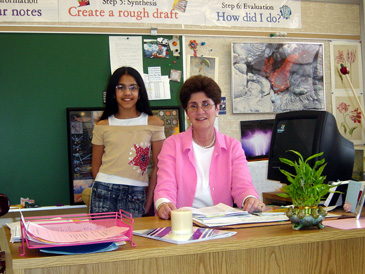
Her procedure to get the attention of her class works so well
that her fifth grade student, Sejal Kapadia, wrote a poem that
illustrates how well the class internalizes the procedure.
“GIVE ME FIVE”
When the teacher says, “Give me five”
It’s just like the queen bee calling us to the hive.
When she says 1 it means
you have to look at her.
When she says 2
you have to be quiet.
When she says 3
still is what you’ll be.
When she says 4
your hands are free.
When 5 is said,
just turn your head.
Then you’ll have to listen, listen, listen.
Barbara has taught for five years and came into teaching from
private industry on a career change through the New Jersey alternative
certification program.
One of the traits of career changers is that they come
from the private sector which is procedure and results-oriented.
For the most part, they are intelligent, confident, mature, professional
people who have come from a background that values results.
Thus, producing student achievement is part of their culture
of generating results. Student achievement is their
forte!
Barbara Starts Her First Day of School With a Plan
Effective teachers have a plan for student achievement ready
on the first day of school. To see Barbara De Santis’
first day of school script, click
here.
She meets her students in the hallway.
This is an excellent management procedure as it prevents students
from wandering around the room before they find their seats.
She arranges them in alphabetical order and then welcomes her
students with a message of positive expectations that they will
have a wonderful year. For them to succeed, she encourages
them to “Choose their attitude” toward each day.
She greets each student individually as they enter the
room, checks their name off of the class list, and gives each
a card with a student number. The desks have been numbered to
match the student number. The students sit quickly
and begin to work.
There is an assignment already on the board, called a
“Do Now.” Their first Do Now is to
complete an information card and to also to draw pictures about
their feelings on science and social studies.
While they are working on their assignment, classical music is
playing and Barbara checks the class for vision problems and seating
adjustments based on IEP/504 accommodations. (Google IEP/504 if
you are not aware of this law and what your responsibilities are
to accommodate children.)
After she collects the information cards, she introduces herself
to the class and shares her mission with the class.
Her mission is to see that her students do the following:
- Achieve strong academic skills
- Build self-efficacy (Google this wonderful
concept)
- Cultivate conscientious citizenship
Orientation to the classroom and housekeeping follows.
This includes room layout, homework board, garbage and recycle
box, location of bathrooms, reference materials, and the teacher
inbox. The inbox is for 1) early work, such as contracts
submitted for grading and revision, 2) makeup work, and 3) mail
for the teacher.
Barbara has a team goal: Be a BRAIN! She
asks her class repeatedly what BRAIN means and if they are following
the procedures of being a BRAIN.
Bring writing supplies
Ready to learn
Assignments at hand
Independent learner
Notebook/binder
Barbara Has a Classroom Management Plan
Barbara’s first day of school script is really
her classroom management plan for the first two weeks of school.
With her plan, she teaches her students how to be responsible
by building their self-efficacy and conscientious citizenship.
It takes her two weeks to teach her class how to be responsible
and in control of their own learning.
To help them, she has classroom procedures.
Remember, as we have said repeatedly:
Students can only be responsible
if there are procedures
to which they can be responsible to.
~The
First Days of School, p. 191
Barbara has a procedure for these activities:
At the beginning of the class
Daily homework review
At the end of class
When a guest enters the room
Traveling in the building
Passing papers
Coming to attention or “Give Me Five”
Fire drill
And many more
She presents her procedures as a PowerPoint presentation to her
class. Click
here to see a list of her classroom procedures.
| In past columns, we have featured other teachers using PowerPoint
to share their procedures with the students. |
|
To help you develop a classroom management plan, you can review
“A Successful First Day Is No Secret.” (September
2005)
If you would like to learn how to develop your
own classroom management plan,
please go to
www.ClassroomManagement.com.
Barbara Builds a Classroom Community
Because her class is highly interactive, Barbara has
discovered the efficacy of using sign language.
For instance, the sign for “please” is made by placing
the flat right hand over the center of the chest and moving the
hand in a clockwise motion.
The sign for “thank you” is made by touching the
lips with the front of the fingers of the right hand. The
hand should be an "open-b." Move the hand away from
your face, palms upward. Smile.
To see these and other signed words, go to http://www.lifeprint.com.
Building a classroom community is Barbara’s goal.
Using sign language is a part of the culture of her class.
Signing gives both the teacher and students something else to
have in common and since "please" and "thank you"
are the most frequently used signs, she uses this to build a community.
She shares that using sign language is another way of
communicating and breaks up the daily routine.
It also encourages a person to look at the speaker. Some
of her students, who do not do as well academically, excel in
sign language! One year, she had the Spanish teacher teach
them the correct phrase to use for going to the bathroom.
If some of her students could not do it, she had some of her ESL
students assist them, using mastery to build self-efficacy!
Barbara says, “As much as I want my students to take the
content knowledge from my class, I also want to teach life skills,
like manners.” For instance, if a student wishes to
go to the bathroom, she teaches them that "may" and
"please" are the key words.
She likes the additional form of communicating in sign language.
For a student who has done something for her, such as turning
off the lights at the end of the day, she can sign "Thank
you." During assemblies, she can often catch the eye of a
student whose mind is wandering and sign "Pay attention,
please."
Because there are some basic words that she uses over and over,
she has created signs for these words. In time, the students
become move involved and create signs of their own. They
even made up signs for "Give Me Five." Many of her students
are kinesthetic learners, and even Barbara feels that she is a
kinesthetic learner, so both have profited from the experience.
At the end of the year, student feedback has been very
positive in indicating to her the benefits of gestures and signs.
“It makes it much more fun and animated for all of us,”
says Barbara.
Barbara Teaches Her Class to Celebrate Success
She teaches her class to celebrate the success of other
students. The procedure is called
Get it; Got it; Good!
- The teacher will ask one student if he/she “Get(s)
it” (or understands the idea).
- If the student understands the direction or idea, he/she will
say “Got it” and the class responds with “Good”
(as low as they can).
- If the student does not understand the concept, he/she will
say “No.” The teacher will then
ask a question about what part is not clear. The teacher
will provide any additional information or example. When
the student understands the information, the teacher will go
back to step one.
In some schools and classrooms, peer pressure severely limits
achievement. Students who DO NOT do well scorn those who
DO well, and these students join together,
socially, to limit each other’s success. It may even
accelerate into bullying.
Barbara does not allow that culture to develop in her
classroom by teaching her students to respect and celebrate the
success of others.
Marvin Marshall (The First Days of School,
p. 164 and www.MarvinMarshall.com)
recently shared how a high school posted two signs, “respect”
and “responsibility,” on the walls of every classroom
and halls. Some teachers greeted this procedure with rolling
eyes and doubtful looks, but all were told that they did not need
to do anything except to observe and make notes of any reactions
the students had regarding the posted signs.
Within a few weeks, anecdote after anecdote painted a picture
of positive reactions by students. At first, students asked
why the signs were posted, and then they wanted to discuss the
principles. Teachers, without being prompted, began to use
the words "respect" and "responsibility" in
class discussions and in some cases taught writing, language arts,
and social studies lessons using the concepts.
Most surprising were the examples of students beginning to use
the language of respect and responsibility in conversations.
Several teachers related that they had heard students discussing
these concept and in a few cases reminding their peers to be more
respectful or responsible. One teacher said, "They
were actually using the words."
In Barbara’s classroom, the students
get into the habit of saying “Good.”
Testing the Classroom Management Plan
Barbara has a test she gives her students to assess their
understanding of the Classroom Management Plan.
To see her Classroom Procedures Test, click
here.
Because she wants her class to do well on the test, she gives
the students an opportunity to show her how much they have learned
after two weeks of being taught the procedures. The test
counts as two grades, one for science and one for social studies.
The procedures have been rehearsed and rehearsed, thus everyone
does well on the test and the class starts the year off in a positive
manner.
Barbara Is Proactive
Effective teachers are proactive teachers.
They have a plan to prevent problems. Then they work the plan.
They proactively have a plan to forestall problems from occurring.
Ineffective teachers are reactive. Ineffective
teachers do not have a plan. They react to each problem
as they occur. Then they rely on gimmicks and single shot
tricks, such as shrill sounding whistles, to use on a hit or miss
process to confront the problem.
Read the chat board that follows this column and note the number
of teachers looking for simplistic, quick-fix gimmicks to solve
classroom problems. And when the quick-fix gimmick does
not work, they react and seek consequences or punishments to control
the classroom or, as one teacher wanted, “make an impact”
on the class.
Effective teachers can see the big picture.
They are ready on the first day of school with a big picture of
a complete classroom management action plan. See www.ClassroomManagement.com
for an explanation of this term.
| Barbara is ready and organized for the first day
of school. The students immediately see and
sense this. It’s comforting to know that you are
in the classroom of a competent teacher. |
- She has a classroom management plan.
- She has a class theme or goal: “BRAIN.”
- She has a class mission: “ABC.”
|
What a way to start!
Even With a Plan, Think Gumby
Barbara shared with us her thoughts on the first day of school.
“Think Wong”
Procedures are what will make your students (and you!) successful
and reduce your stress. It seems difficult at times to practice
(and practice, and practice), but the benefits are enormous –
so stick with it!
“Think Darwin”
Teaching, to me, is undoubtedly, an evolutionary process.
It is full of constant change at irregular pace. The last
lesson of the day does not always look like the first. I’ve
made great leaps and then there have been a few extinctions, yet,
I still keep growing and refining my craft.
“Think Gumby”
You really need to be flexible—not only from day to day
or class to class but also minute by minute! This does not
mean you change your rules or procedures, but you have to consider
the instructional methods, assessments, and interests of your
students. One size does not fit all! And Gumby was
not a solo performer; you shouldn’t be either. Seek
others for help and support.
“Think Disney”
Remember the magic. I think that’s why we have chosen
this profession. I cannot explain the wonder of seeing a
student really get it! I have my students complete a survey
each June with the question: “What class activity really
helped you learn this year?” Sometimes it is my carefully
prepared labs and detailed lessons. Or it can be a small
moment (that was not detailed in my lesson plan) that made all
the difference.
And What Do You Think?
Who will you think about as the school year begins? Wong?
Disney?“ Gumby? Darwin? All have wonderful symbolism
associated with them for your happiness and success as a teacher.
“Think the Fox” from The Little
Prince.
The soul of the book is embraced in a line uttered by the fox
to the little prince. The fox says, “It is only with
the heart that one can see rightly; what is essential is invisible
to the eye.”
That statement is the quintessential essence of classroom management—what
is essential is invisible to the eye. Barbara De Santis
works for weeks with her students on classroom management and
then gives them a test for grade. Yet, to walk into her
classroom, one would see students working and learning—the
classroom humming with excitement and curriculum. The classroom
procedures that have been taught and made part of the fabric of
the classroom environment are invisible to the eye, yet vital
for the smooth operation of the classroom. The casual observer
would spot the learning and completely miss the classroom management.
The time spent to establish your procedures at the start of the
school year will pay dividends that are clear and observable—more
time for teaching, greater responsibility by the students for
their behavior, a sense of calm and ease in the classroom, and
respect by students for one another.
The fox from The Little Prince also says, “You
become responsible, forever, for what you have tamed.” The
opportunity to make a difference in the life of a child begins
with organizing your classroom.
Gumby’s friend Pokey often got dragged into situations
against his will, but ended up always appreciating the experience.
Resist the temptation to ignore procedures and begin teaching
subject matter during the first days of school. It may seem
like a waste of valuable learning time, but in the end you and
your students will appreciate the atmosphere created in the classroom.
There is more time for student success after procedures are in
place.
Procedures are just like the ABCs. They are deceivingly
simple, but when combined, they transform into powerful imagery.
| “Think ABCs” |
- Achieve strong academic skills
- Build self-efficacy
- Cultivate conscientious citizenship
|
“Get it?”
“Good!”
 For a printable version of this article click
here.
For a printable version of this article click
here.
Harry & Rosemary Wong products: http://www.harrywong.com/product/
Email Harry Wong: harrywong@teachers.net
Gazette Articles by Harry & Rosemary Wong:
If you spot a link that appears to be out-of-date, please alert us at webmaster@teachers.net!
- A Grateful Goodbye After 15 Years (Jun 2015)
- Love, Marriage, and Babies, Oh My! (May 2015)
- Retention Rate Is 100 Percent (Apr 2015)
- Teacher Effectiveness and Human Capital (Mar 2015)
- Training Teachers to Be Effective (Feb 2015)
- Making Deals Is Ineffective (Dec 2014 / Jan 2015)
- Retrieving and Carrying Electronic Devices (Nov 2014)
- Sharing to Succeed (Oct 2014)
- How a University Prepares Its Students (Sep 2014)
- Effective Teaching (Aug 2014)
- Your Future Is in Your Hands (June/July 2014)
- The Classroom Management Book (May 2014)
- When Students Succeed; Teachers Succeed (April 2014)
- Teaching New Teachers How to Succeed (March 2014)
- Execute and Praise (February 2014)
- Shaping a Solid Foundation (Dec 2013 / Jan 2014)
- The Most Misunderstood Word (November 2013)
- How to Start Class Every Day (October 2013)
- Prevention: The Key to Solving Discipline Problems (September 2013)
- Planning, Planning, Planning (August 2013)
- Are You THE One? (June / July 2013)
- Practical Examples That Work (May 2013)
- A Disability Is Not a Handicap (Apr 2013)
- Totally Inexcusable (Mar 2013)
- Be Proud of Public Education (Feb 2013)
- Structure Will Motivate Students (Dec 2012 / Jan2013)
- Orchestrating the Classroom (Nov 2012)
- The Lasting Impact of Instructional Coaching (Oct 2012)
- Learning, Laughing, and Leaving a Legacy (Sep 2012)
- Twenty-two, First Year, and Legit (Aug 2012)
- A Master Teacher of Teachers (June/July 2012)
- Where Going to School Means Success (May 2012)
- A Nationally Celebrated High School (Apr 2012)
- The Highest Rated School in New York City, Part 2 (Mar 2012)
- The Highest Rated School in New York City, Part 1 (Feb 2012)
- The Importance of Culture (Dec 2011 / Jan 2012)
- You Can Teach Classroom Management (Nov 2011)
- Seamless, Transparent, and Consistent (Oct 2011)
- Coaching Teachers to Be Effective Instructors (Sep 2011)
- How a Principal Creates a Culture of Consistency (Aug 2011)
- Graduation Begins in Your Classroom (June/July 2011)
- The Inspiration of a Mother (May 2011)
- How to Be an Effective Leader (Apr 2011)
- Learning Objectives: The Heart of Every Lesson (Mar 2011)
- Even Shakespeare Had Structure (Feb 2011)
- Effectiveness Defined: It's Not a Mystery (Dec 2010 / Jan 2011)
- Surviving Without a Principal (Nov 2010)
- Achieving Greatness: Locke Elementary School, Part 2 (Oct 2010)
- Teaching Greatness: Locke Elementary School, Part 1 (Sep 2010)
- Effective from the Start (Aug 2010)
- Ten Year Summary of Articles, 2000 to 2010 (June/July 2010)
- The Success of a Culture of Consistency (May 2010)
- Training Teachers to Be Effective (Apr 2010)
- Learning to Teach, Teaching to Learn (Mar 2010)
- Turning Teaching Dreams into Reality (Feb 2010)
- Dreams and Wishes Can Come True (Dec 2009 / Jan 2010)
- Success in a State Controlled School (Nov 2009)
- Inner City Is Not An Excuse (Oct 2009)
- Exceeding All Expectations (Sep 2009)
- Teachers Are the Difference (Aug 2009)
- Nine Year Summary of Articles, 2000 to 2009 (Jun/Jul 2009)
- Teachers Are the Greatest Assets (May 2009)
- The Tools for Success (Apr 2009)
- Assessing for Student Learning (Mar 2009)
- To Be an Effective Teacher Simply Copy and Paste (Feb 2009)
- The Sounds of Students Learning and Performing (Dec 2008)
- A School That Achieves Greatness (Nov 2008)
- Boaz City Schools: Professional Learning Teams (Oct 2008)
- It Was Something Close to a Miracle (Sep 2008)
- A Computer Teacher Shows the Way (Aug 2008)
- Eight Year Summary of Articles, 2000 to 2008 (Jun/Jul 2008)
- An Amazing Kindergarten Teacher (May 2008)
- Schools That Beat the Academic Odds (Apr 2008)
- Academic Coaching Produces More Effective Teachers (Mar 2008)
- Coaches Are More Effective than Mentors (Feb 2008)
- Wrapping the Year with Rap! (Dec 2007/Jan 2008)
- The Floating Teacher (Nov 2007)
- Taking the Bite Out of Assessment—Using Scoring Guides (Oct 2007)
- Ten Timely Tools for Success on the First Days of School (Sep 2007)
- First Day of School Script - in Spanish, Too! (Aug 2007)
- Seven Year Summary of Articles, 2000 to 2007 (Jun 2007)
- Effective Teachers End the Year Successfully (May 2007)
- Training Gen Y Teachers for Maximum Effectiveness (Apr 2007)
- Classroom Management Applies to All Teachers (Mar 2007)
- Students Want a Sense of Direction (Feb 2007)
- Rubrics in Two College Classes (Dec 2006/Jan 2007)
- How to Write a Rubric (Nov 2006)
- Assessing Student Progress with a Rubric (Oct 2006)
- A 92 Percent Homework Turn-in Rate (Sep 2006)
- Effective Teachers Are Proactive (Aug 2006)
- Five Year Summary of Articles (Jun 2006)
- Hitting the Bulls Eye as a Beginning Teacher (May 2006)
- They're Eager to Do the Assignments (Apr 2006)
- The Success of Special Ed Teachers (Mar 2006)
- What Teachers Have Accomplished (Feb 2006)
- Fifty Years Ago, The Legacy (Dec 2005/Jan 2006)
- The Emergency Teacher (Nov 2005)
- Classroom Management Is Not Discipline (Oct 2005)
- A Successful First Day Is No Secret (Sep 2005)
- The Most Important Factor (Aug 2005)
- Four Year Summary of Articles (Jul 2005)
- Improving Student Achievement Is Very Simple (Part 2) (Jun 2005)
- Improving Student Achievement Is Very Simple (Part 1) (May 2005)
- Never Cease to Learn (Apr 2005)
- His Classroom Is a Real Life Office (Mar 2005)
- The Power of Procedures (Feb 2005)
- The First Ten Days of School (Jan 2005)
- PowerPoint Procedures (Nov/Dec 2004)
- The Saints of Education (Oct 2004)
- How Procedures Saved a Teacher's Life (Sep 2004)
- How to Help Students with Their Assignments (Aug 2004)
- Three Year Summary of Articles (Jun/Jul 2004)
- His Students are All Certified (May 2004)
- What to Do When They Complain (Apr 2004)
- A Well-Oiled Learning Machine (Mar 2004)
- The Effective Teacher Adapts (Feb 2004)
- How to Start a Lesson Plan (Aug 2003)
- Applying for a Teaching Job in a Tight Market - Part 2 (Jun/Jul 2003)
- Applying for a Teaching Job in a Tight Market (May 2003)
- The Effective Substitute Teacher (Apr 2003)
- A First Day of School Script (Mar 2003)
- How to Retain New Teachers (Feb 2003)
- No Problem With Hurricane Lili (Dec 2002)
- A Class Size of 500 (Nov 2002)
- Effective Practices Apply to All Teachers (Oct 2002)
- Dispensing Materials in Fifteen Seconds (Sept 2002)
- How To Start School Successfully (Aug 2002)
- Teaching Procedures Is Teaching Expectations (June - July 2002)
- $50,000 to Replace Each Teacher (May 2002)
- Even Superintendents Do It (Apr 2002)
- Impossible, No Job Openings? (Mar 2002)
- A Stress Free Teacher (Feb 2002)
- A Most Effective School (Jan 2002)
- Van Gogh in Nine Hours (Dec 2001)
- The Effective Teacher Thinks (Nov 2001)
- How a Good University Can Help You (Sep 2001)
- How to Motivate Your Students (May 2001)
- How to Recognize Where You Want to Be (Apr 2001)
- What Successful New Teachers Are Taught (Mar 2001)
- A Journey of the Heart (Feb 2001)
- The Miracle of Teachers (Jan 2001)
- It's Not the Students. It's the Teacher. (Dec 2000)
- The First Five Minutes Are Critical (Nov 2000)
- How to Start a Class Effectively (Oct 2000)
- The Problem Is Not Discipline (Sep 2000)
- There Is Only One First Day of School (Aug 2000)
- Applying for Your First Job (Jul 2000)
- Your First Day (Jun 2000)
Browse through the latest posts from the Classroom Management
Chatboard...
|




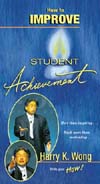

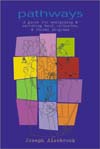


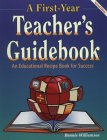
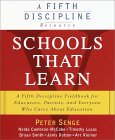

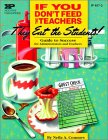
 Effective
Teaching...
Effective
Teaching... 